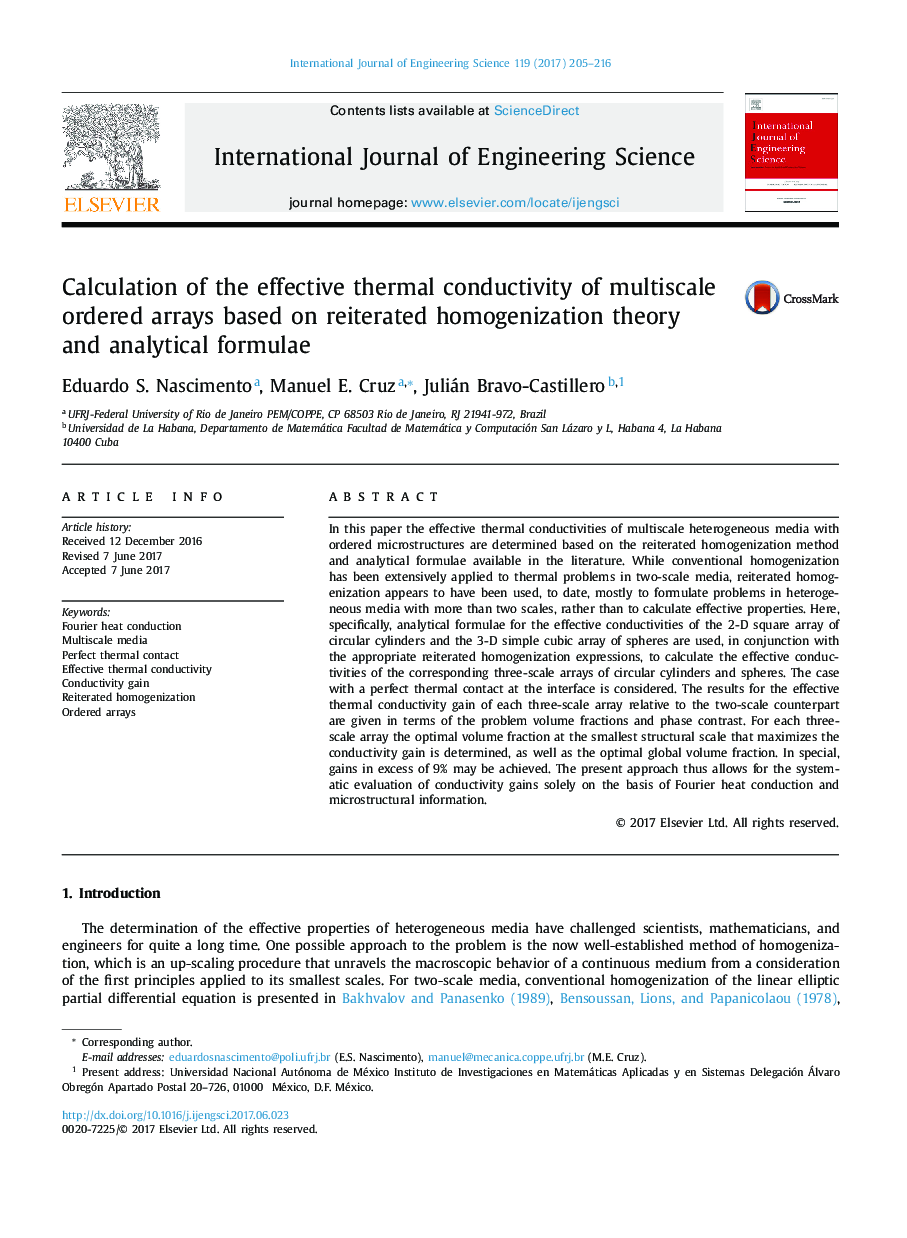| Article ID | Journal | Published Year | Pages | File Type |
|---|---|---|---|---|
| 5022698 | International Journal of Engineering Science | 2017 | 12 Pages |
Abstract
In this paper the effective thermal conductivities of multiscale heterogeneous media with ordered microstructures are determined based on the reiterated homogenization method and analytical formulae available in the literature. While conventional homogenization has been extensively applied to thermal problems in two-scale media, reiterated homogenization appears to have been used, to date, mostly to formulate problems in heterogeneous media with more than two scales, rather than to calculate effective properties. Here, specifically, analytical formulae for the effective conductivities of the 2-D square array of circular cylinders and the 3-D simple cubic array of spheres are used, in conjunction with the appropriate reiterated homogenization expressions, to calculate the effective conductivities of the corresponding three-scale arrays of circular cylinders and spheres. The case with a perfect thermal contact at the interface is considered. The results for the effective thermal conductivity gain of each three-scale array relative to the two-scale counterpart are given in terms of the problem volume fractions and phase contrast. For each three-scale array the optimal volume fraction at the smallest structural scale that maximizes the conductivity gain is determined, as well as the optimal global volume fraction. In special, gains in excess of 9% may be achieved. The present approach thus allows for the systematic evaluation of conductivity gains solely on the basis of Fourier heat conduction and microstructural information.
Related Topics
Physical Sciences and Engineering
Engineering
Engineering (General)
Authors
Eduardo S. Nascimento, Manuel E. Cruz, Julián Bravo-Castillero,
